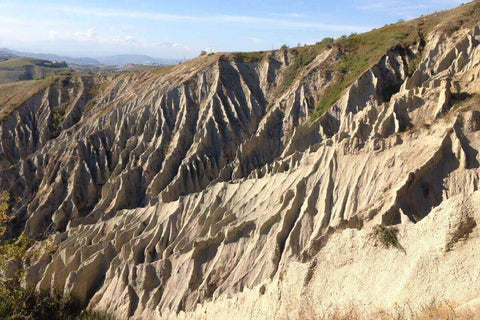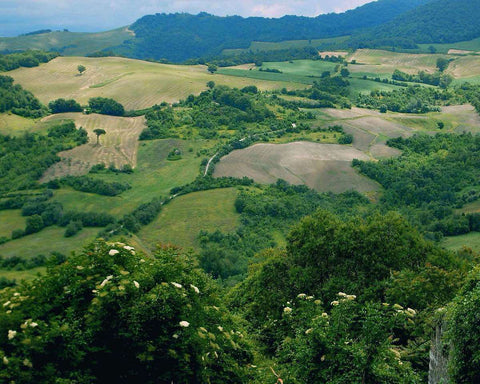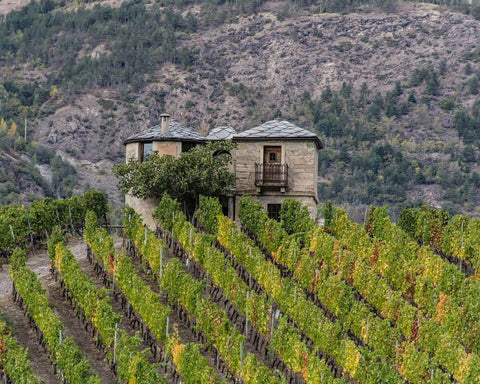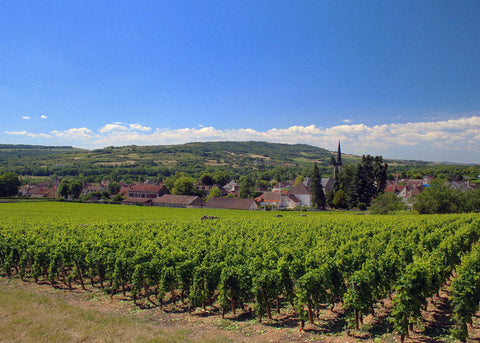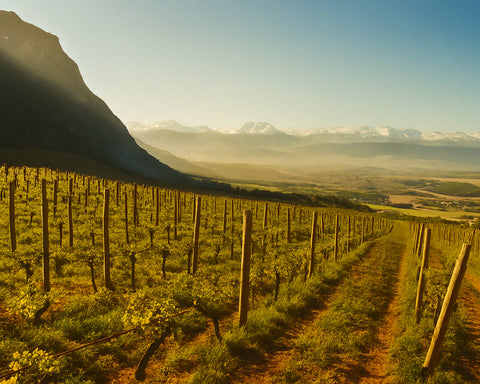Abruzzo, nestled in central Italy, stands as one of the country's hidden gems. Known for its diverse landscapes ranging from rugged mountains to pristine coastline, Abruzzo is revered for its natural beauty and rich cultural heritage.
Table of Contents
History of Abruzzo
Abruzzo, bordered by the Apennines to the west and the Adriatic Sea to the east, has always been a region of strategic significance, both geopolitically and agriculturally. Its history is a rich tapestry of cultures, from the ancient Italic tribes to the Romans, who recognized the region's potential for agriculture and wine production.
Over the centuries, Abruzzo underwent numerous transformations, from being a key region in the Kingdom of the Two Sicilies to playing a significant role in the unification of Italy in the 19th century.
L'Aquila, the regional capital, was founded in the 13th century and has since been a center of culture and history in Abruzzo. Throughout these historic shifts, one constant remained: Abruzzo's unwavering commitment to producing exceptional wines and maintaining its agricultural traditions.
The history of winemaking in Abruzzo stretches back to the ancient Italic tribes, who cultivated vines in the region long before the arrival of the Romans. Archaeological evidence suggests that viticulture was well-established in Abruzzo when the Romans arrived in the 3rd century BCE.
The Romans, known for their agricultural prowess, recognized the potential of Abruzzo's terroir and further developed viticulture in the region. They introduced advanced techniques and expanded the vineyards, laying the foundation for Abruzzo's future as a major wine-producing area.
Following the fall of the Roman Empire, viticulture in Abruzzo, as in much of Europe, was preserved and advanced by monastic orders. Monasteries became centers of agricultural knowledge, and monks meticulously maintained vineyards and documented their winemaking practices. The Benedictine order, in particular, played a significant role in promoting high-quality viticulture.
During the medieval period, the nobility also began recognizing the value of Abruzzese wines. They established vineyards and wineries, contributing to the region's reputation for producing fine wines. The powerful feudal families of Abruzzo were instrumental in promoting and protecting the region's viticultural interests.
The Renaissance period marked a significant turning point in Abruzzo's winemaking history. During this time, the Montepulciano grape began to gain prominence. Montepulciano, known for its robust flavor and deep color, became the cornerstone of Abruzzo's viticulture. The grape thrived in the region's diverse terroir, producing wines with remarkable complexity and aging potential.
One of the most notable developments during this period was the emergence of Montepulciano d'Abruzzo. This wine, made exclusively from Montepulciano grapes, is celebrated for its depth, structure, and longevity. The origins of Montepulciano d'Abruzzo can be traced back to the 18th century when winemakers began to refine the winemaking techniques for Montepulciano, transforming it into the powerful wine we know today.
The 19th century was a period of innovation and challenges for Abruzzo's wine industry. On the one hand, the region saw significant advancements in winemaking techniques. The influence of French enologists and adopting scientific approaches to viticulture improved the quality and consistency of Abruzzese wines.
However, this period was also marked by the devastating impact of phylloxera, a vine-killing pest that ravaged European vineyards. Abruzzo was not spared, and many vineyards were destroyed. The crisis prompted a replanting effort, often using American rootstocks resistant to phylloxera, which eventually allowed the region to recover and continue its winemaking traditions.
The early 20th century was challenging for Abruzzo, as it was for many European wine regions. The two World Wars and the economic turmoil that followed significantly impacted viticulture. However, the resilience of Abruzzo's winemakers shone through as they worked to rebuild and rejuvenate their vineyards.
The mid-20th century marked the beginning of a renaissance for Abruzzese wines. Winemakers began to focus on quality over quantity, adopting modern techniques while respecting traditional methods. This period saw the rise of notable wine families and estates, such as Valentini and Masciarelli, who played pivotal roles in elevating the status of Abruzzo's wines on the global stage.
In recent decades, Abruzzo has firmly established itself as one of Italy's premier wine regions. The region's commitment to quality, combined with its unique terroir, has earned it a place among the elite wine-producing areas of the world.
The appellation system, introduced in the 1960s, further cemented Abruzzo's reputation. Creating DOC (Denominazione di Origine Controllata) and DOCG (Denominazione di Origine Controllata e Garantita) classifications helped protect and promote the region's wines. Montepulciano d'Abruzzo and Trebbiano d'Abruzzo were among the first to receive DOC status, underscoring their significance.
Terroir of Abruzzo
Abruzzo's terroir is characterized by its unique interplay of climate, topography, and soil. The region enjoys a Mediterranean climate, with hot summers and mild winters, moderated by the Apennines and the Adriatic Sea.
The mountainous terrain, particularly in areas like the Gran Sasso and Maiella massifs, provides an optimal setting for vineyards, ensuring ample sunlight and drainage. The soil composition varies, ranging from clayey and calcareous in the coastal areas to rocky and sandy in the mountainous regions.
This diverse terroir lends itself to the cultivation of a myriad of grape varieties, each expressing a unique facet of the region's multifaceted character.
The Geology of Abruzzo
Abruzzo's landscape predominantly comprises rolling hills and rugged mountains, with elevations ranging from sea level to over 2,900 meters. The region is divided into several sub-regions, each with unique geological characteristics. The primary wine-producing areas include Teramo, Chieti, Pescara, and L'Aquila, each contributing distinct terroir profiles.
- Teramo: Known for its calcareous clay soils, Teramo provides excellent drainage, which is essential for growing high-quality grapes. The region is famed for Montepulciano d'Abruzzo Colline Teramane, which thrives in the well-drained soils and benefits from the area's significant diurnal temperature variation.
- Chieti: Characterized by clay and limestone soils, Chieti is slightly warmer than Teramo. These conditions are ideal for the white grape Trebbiano, which produces crisp and aromatic wines.
- Pescara: This area features a mix of clay, sand, and limestone soils. Pescara is well-known for its Pecorino and Passerina grapes, producing vibrant white wines with good acidity.
- L'Aquila: Characterized by rocky and sandy soils, L'Aquila is home to high-altitude vineyards. These conditions are perfect for cultivating unique grape varieties like Montepulciano and Cococciola.
The region's geological diversity ensures that each grape variety can match its optimal soil type, enhancing the grapes' expression and complexity.
Climate and Its Influence
Abruzzo's climate is Mediterranean, characterized by hot summers and mild winters, with significant temperature variation between day and night. This diurnal range is crucial for grape ripening, allowing the development of sugars during the day and preserving acidity at night. The region's microclimates, influenced by the Apennines and the Adriatic Sea, further contribute to the distinctiveness of Abruzzese wines.
The Grapes of Abruzzo
Abruzzo has several indigenous grape varieties, each adapted to the region's unique terroir. The most notable are Montepulciano, Trebbiano, Pecorino, and Passerina.
Red Grape Varietals
- Montepulciano: The cornerstone of Abruzzo's most celebrated wines, such as Montepulciano d'Abruzzo and Montepulciano d'Abruzzo Colline Teramane.
- Sangiovese: Widely planted and known for its high acidity and bright red fruit flavors.
- Cococciola: Produces early-drinking wines with soft tannins and fruity flavors.
- Ciliegiolo: Known for its spicy and tannic wines.
White Grape Varietals
- Trebbiano: The most widely planted white grape in Abruzzo, known for producing crisp and fresh wines.
- Pecorino: Known for its aromatic and crisp wines, primarily in Pescara and Teramo.
- Passerina: Produces vibrant white wines with good acidity and floral aromas.
- Cococciola: Known for its high acidity and potential for sparkling wines.
Top Wines of Abruzzo
Montepulciano d'Abruzzo: Often referred to as the "King of Wines" in Abruzzo, Montepulciano d'Abruzzo is a testament to the region's vinicultural prowess. Made from the Montepulciano grape, this wine is characterized by its deep ruby hue, complex aromas of dark fruit and spices, and an aging potential that rivals the world's finest wines.
The wine undergoes extended aging, first in large oak barrels and then in the bottle, resulting in a wine of profound depth, structure, and elegance.
Trebbiano d'Abruzzo: Trebbiano d'Abruzzo, while often seen as a simple table wine, has its distinct identity. Known for its crisp acidity and light, refreshing flavors, Trebbiano d'Abruzzo is perfect for pairing with seafood and light pasta dishes.
Other Notable Wines: While Montepulciano d'Abruzzo and Trebbiano d'Abruzzo are undoubtedly the crown jewels of Abruzzo, the region is also home to other notable wines like Pecorino and Passerina. Pecorino is celebrated for its aromatic complexity and crisp acidity, while Passerina is known for its vibrant floral aromas and fresh finish.
Cuisine and Typical Products of Abruzzo
Abruzzo's culinary landscape is as intricate and refined as its wines. The region is famed for its rich and hearty dishes, with a strong emphasis on local and seasonal ingredients.
Truffles, particularly the black truffles of L'Aquila, hold a place of honor in Abruzzese cuisine. Dishes like "Maccheroni alla Chitarra," fresh pasta made using a special guitar-like tool, capture the essence of Abruzzo on a plate. Arrosticini, skewers of roasted lamb, showcase the region's love for meat dishes.
Abruzzo is also known for its cheeses, with Pecorino and Scamorza being some of the notable varieties. The culinary traditions of Abruzzo, paired with its exceptional wines, offer a gastronomic journey that resonates with the region's rich heritage and passion for excellence.
Abruzzese Antipasti
In Abruzzo, a meal often starts with a selection of antipasti. These appetizers showcase the region's diverse flavors and set the stage for future courses. A typical antipasti spread might include:
- Antipasto alla Teramana: This classic dish features a variety of cured meats, cheeses, and marinated vegetables, reflecting the agricultural bounty of the region.
- Bruschetta: Toasted bread topped with fresh tomatoes, olive oil, and garlic, often seasoned with local herbs.
- Insalata di Mare: A seafood salad with octopus, shrimp, and calamari dressed in olive oil and lemon.
- Frittata di Zucchine: A zucchini frittata made with fresh eggs and local vegetables.
Abruzzese Primi Piatti (First Courses)
The first course in an Abruzzese meal often features pasta, risotto, or hearty soups. These dishes showcase the region's grains, vegetables, and seasonal produce.
- Maccheroni alla Chitarra: Thin, square-shaped pasta strands often served with a lamb ragù or a simple tomato sauce.
- Scrippelle 'mbusse: Crepes filled with grated pecorino cheese and rolled, then served in a rich broth.
- Minestrone Abruzzese: A hearty vegetable soup made with local beans, potatoes, and seasonal greens.
- Ravioli di Ricotta: Fresh pasta filled with ricotta cheese and spinach, often served with a sage and butter sauce.
Abruzzese Secondi (Second Courses)
Abruzzo is known for its high-quality meats, particularly lamb and pork. The second course often highlights these prized ingredients.
- Arrosticini: Skewers of roasted lamb, often seasoned with rosemary and olive oil, served with fresh bread.
- Agnello Cacio e Ovo: Lamb cooked with pecorino cheese and eggs, a traditional dish of the region.
- Porchetta: A savory, fatty, and moist boneless pork roast, often seasoned with garlic, rosemary, and fennel.
- Coniglio alla Cacciatora: Rabbit stew cooked with tomatoes, garlic, and white wine.
Abruzzese Contorni (Side Dishes)
Abruzzese cuisine doesn't neglect vegetables. Many side dishes and salads highlight the region's produce.
- Peperonata: A stew-like dish of slowly cooked bell peppers, onions, and tomatoes.
- Fagioli all'Uccelletto: Beans stewed with tomatoes, garlic, and sage.
- Cavolfiore Ripassato: Sautéed cauliflower with garlic, olive oil, and chili flakes.
Abruzzese Formaggi (Cheeses)
Abruzzo produces some of Italy's most renowned cheeses. A cheese course often follows the main dishes.
- Pecorino Abruzzese: A hard sheep's milk cheese with a robust, tangy flavor, often used in cooking or enjoyed on its own.
- Scamorza: A semi-hard cow's milk cheese, often smoked and enjoyed for its distinctive taste.
- Ricotta: Fresh whey cheese, often used in both savory and sweet dishes.
- Caciocavallo: A stretched-curd cheese with a sharp, tangy flavor.
Abruzzese Dolci (Dessert)
Abruzzese desserts often feature local honey, almonds, and seasonal fruits.
- Crostata di Marmellata: A jam tart made with a shortcrust pastry and filled with local fruit preserves.
- Parrozzo: A traditional cake made with semolina, almonds, and chocolate.
- Sfogliatelle Abruzzesi: Pastry filled with ricotta cheese, almonds, and citrus zest.
- Bocconotti: Small pastries filled with grape jam or chocolate.
Typical Products of Abruzzo
Abruzzo's cuisine is based on high-quality local products. Many of these have achieved protected status, ensuring authenticity and traditional production methods.
Saffron
The saffron from Navelli, known as Zafferano dell'Aquila DOP, is considered one of the finest saffron varieties in the world. These delicate threads are prized for their intense flavor and vibrant color.
Olive Oil
Abruzzo is renowned for its high-quality olive oil (Olio Extravergine di Oliva DOP). The region's diverse olive varieties and traditional production methods result in exceptional oils used in cooking and dressing.
Cheese
Abruzzo produces a wide variety of cheeses, each reflecting the characteristics of its production area.
- Pecorino di Farindola: A hard sheep's milk cheese with a tangy flavor.
- Scamorza di Rivisondoli: A semi-hard cheese often smoked for added flavor.
- Ricotta Affumicata: Smoked ricotta cheese, which develops a firm texture and rich, smoky flavor.
Meat and Charcuterie
Abruzzese meat products are known for their quality and distinctive flavors.
- Mortadella di Campotosto: A cured meat product made with pork and seasoned with spices.
- Salame Aquilano: A salami characterized by its coarse grain and robust flavor.
- Salsicce di Fegato: Liver sausages often flavored with garlic and chili pepper.
Fruits and Vegetables
Abruzzo's varied climate allows for cultivating a wide range of produce.
- Pomodoro a Pera d'Abruzzo: Pear-shaped tomatoes known for their sweet flavor and firm texture.
- Fichi Reali di Atessa: High-quality figs grown in the Atessa area, known for their sweetness and rich flavor.
- Zafferano dell'Aquila: Saffron grown in the high plains of Navelli, renowned for its intense flavor and vibrant color.
